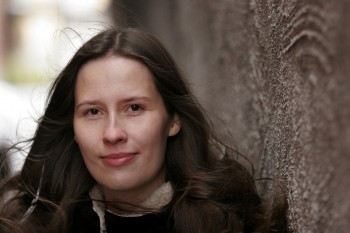Ruminations
16 April 2010 | Authors, Reviews
One of the most exciting features of Finnish poetry since 2000 has been the wealth and breadth of poetry by young women. Compared to literature written by women in earlier decades, contemporary poetry appears to have freed itself from one-track feminism and knotted brow earnestness to become a literature with a richer approach to womanhood, its forms and history.
The first collection by Vilja-Tuulia Huotarinen (born 1977), Sakset kädessä ei saa juosta (‘You mustn’t run with scissors in your hand’, 2004) was a glimpse into the culturally restricted but nevertheless autonomous world of young girls. Mother’s instructions and Father’s advice will be broken down as one grows up; in spite of the genderised system, it is still possible for a young woman to make her own choices.
In the collection Naisen paikka (‘A woman’s place’, 2007), Huotarinen further extends her look at feminist themes by addressing women’s history. She dedicates the collection to a woman poem singer named Mateli Kuivalatar, a distant relative of hers who in the 1830s sang the best folk poems to Elias Lönnrot (compiler of the national epic Kalevala), who later published them in his Kanteletar collection.
Folkloric features are evident in the collection not only in the themes of joy and sorrow but also in the structure of the poems, with its varied and rhythmic repetition. Huotarinen is not the only contemporary poet who is interested in the oldest Finnish sung poetry. For example, the poems of Johanna Venho (born 1971), planted in women’s everyday life, grow from the same tradition. This is an intriguing feature of Finnish poetry since 2000, which has at the same time been extremely receptive to different linguistic philosophical pulls along with the influence, for instance, of contemporary American poetry.
In her new collection Iloisen lehmän runot (‘The poems of the happy cow’, WSOY, 2009) Huotarinen brings to the centre of her poetic imagery the cow, icon of Finland’s agrarian landscape. Historically speaking, the stories of the woman and the cow are intertwined; milk and dairy farming in Finnish culture have been decidedly the realm of girls and women. But that is just the thematic sounding board for Huotarinen’s poems: she develops the figure of the happy cow into an analogy for women of all ages and times. The reader re-encounters the ‘lean lass’ of the first collection, the speaker of poems, but also mythic Aphrodite and Penelope, along with today’s Wonder Woman. All the cow-women live in a world that forces them to take their place in the barn, to settle in their own pen.
Nonetheless bursts, leaps and joy are possible; the collection notes with irony how the well-behaved, good-natured cow figure and agrarian culture have changed and crumbled as barns grew empty. Yet the call of Queenie – the leader of the herd, the one with the cowbell – remains the eternal maternal cry on behalf of life: the call is followed, even when it means butting through a wall.
Translated by Jill G. Timbers
Tags: poetry
No comments for this entry yet
Leave a comment
Also by Mervi Kantokorpi
Finding a voice - 13 November 2014
In the shadow of the cathedral - 6 November 2014
Updated, alive - 8 May 2014
Human destinies - 7 February 2014
Writing silence - 6 June 2013
-
About the writer
Mervi Kantokorpi is a literary scholar and critic and reviews books for, among other publications, the newspaper Helsingin Sanomat.
© Writers and translators. Anyone wishing to make use of material published on this website should apply to the Editors.

